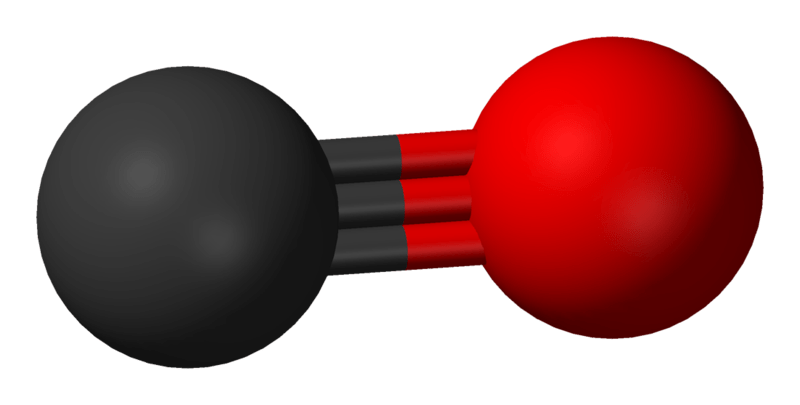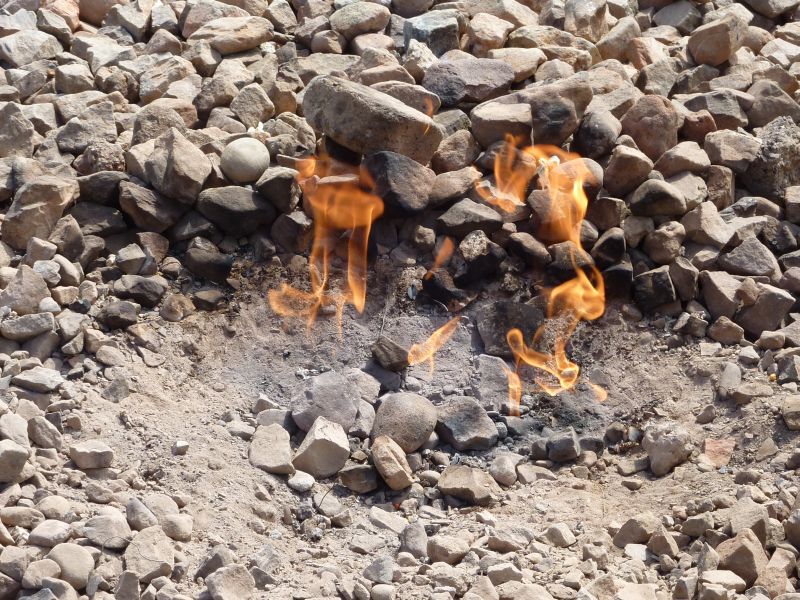Difference Between Carbon Monoxide and Natural Gas
The key difference between carbon monoxide and natural gas is that carbon monoxide is a harmful greenhouse gas, whereas natural gas is an important source of hydrocarbon compounds.
Carbon monoxide and natural gas are two types of gases that occur naturally. Among these two gases, carbon monoxide is considered a toxic gas, while natural gas is an important source of carbon.
CONTENTS
1. Overview and Key Difference
2. What is Carbon Monoxide
3. What is Natural Gas
4. Side by Side Comparison – Carbon Monoxide vs Natural Gas in Tabular Form
5. Summary
What is Carbon Monoxide?
Carbon monoxide is a colourless, odourless and tasteless flammable gas having the chemical formula CO. This gas is slightly less dense than air. At high concentrations, carbon monoxide is toxic to animals who use haemoglobin as the oxygen carrier in the blood. This gas is also known as carbonous oxide, carbon(II) oxide, flue gas, and monoxide.

When considering the chemical structure of carbon monoxide, it contains one carbon atom bonded to one oxygen atom through a triple bond containing two pi bonds and one sigma bond. We can identify carbon monoxide as the simplest oxocarbon, and it is isoelectronic with other triple-bonded diatomic species having ten valence electrons, e.g. cyanide ion.
There are different preparation methods of carbon monoxide, including the partial oxidation of carbon-containing compounds such as carbon dioxide. Another important source is coal gas. Iron smelting also produces this toxic gas as a byproduct.
What is Natural Gas?
Natural gas is a naturally occurring gas that forms from fossils. Therefore, it is a form of fossil fuel. This gas is produced via geological processes fossils have to undergo for a very long time period. Moreover, it is a mixture of several important hydrocarbons. The major constituents are methane and simple alkanes. However, there are trace amounts of carbon dioxide, nitrogen, hydrogen and sulfide along with minute amounts of helium as well.

This is a non-renewable energy source because the production of this gas uses fossils which regenerate rarely. The uses of this gas include heating, cooking, and electricity generation. Moreover, we can use it as a fuel for motor vehicles. Apart from that, we can find this gas in deep underground rock formations.
What is the Difference Between Carbon Monoxide and Natural Gas?
Carbon monoxide and natural gas are naturally occurring gaseous substances. The key difference between carbon monoxide and natural gas is that carbon monoxide is a harmful greenhouse gas, whereas natural gas is an important source of hydrocarbon compounds. Moreover, carbon monoxide is made of CO molecules while natural gas is mainly made of methane and other compounds such as ethane, propane, butane and pentane. So, this is another difference between carbon monoxide and natural gas.
Besides, although carbon monoxide is a toxic gas, it has important applications such as in metal fabrication, as fuel gas (a mixture of carbon monoxide and hydrogen gas), in manufacturing chemicals such as acids, esters, alcohols, etc. Meanwhile, the most important use of natural gas is the production of hydrocarbon compounds.
Below infographic tabulates the differences between carbon monoxide and natural gas for side by side comparison.

Summary – Carbon Monoxide vs Natural Gas
Carbon monoxide is a toxic gas while natural gas is an important carbon source which is non-renewable. The key difference between carbon monoxide and natural gas is that carbon monoxide is a harmful greenhouse gas, whereas natural gas is an important source of hydrocarbon compounds.
Reference:
1. “Natural Gas.” Wikipedia, Wikimedia Foundation, 6 Nov. 2020, Available here.
2. “Carbon Monoxide Poisoning.” Mayo Clinic, Mayo Foundation for Medical Education and Research, 16 Oct. 2019, Available here.
Image Courtesy:
1. “Carbon-monoxide-3D-balls” By Benjah-bmm27 – Own work, Public Domain) via Commons WikimediancG1vNJzZmivp6x7pbXFn5yrnZ6YsqOx07CcnqZemLyue8OinZ%2Bdopq7pLGMm5ytr5Wau26vwKuZqKZdoryvu9eim55lkaOxbrrArayrmZxitKK%2Fjg%3D%3D